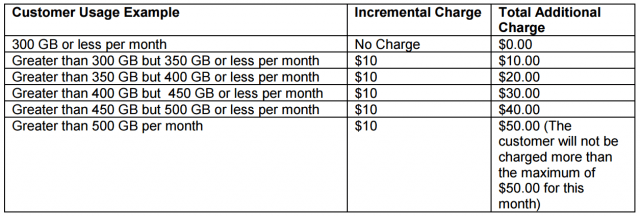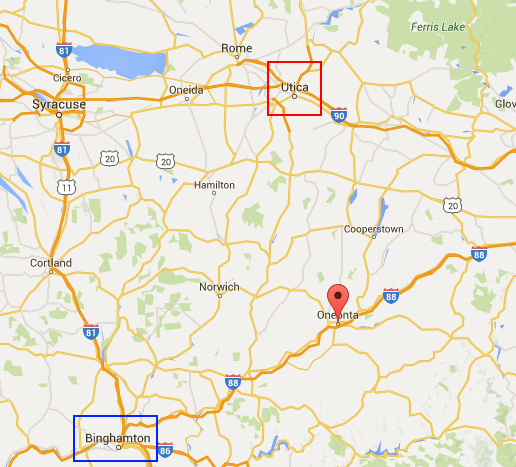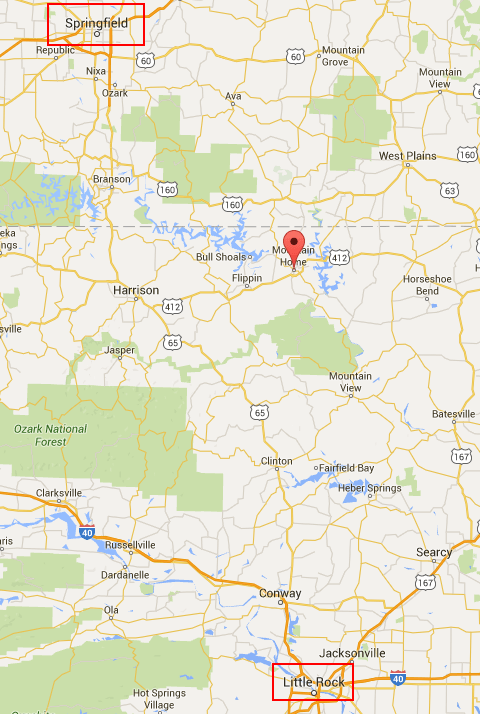 CenturyLink will begin a usage-based billing trial in Yakima, Wa., starting July 26 that will combine usage caps with an overlimit fee on customers that exceed their monthly usage allowance. The trial in Washington state may soon be a fact of life for most CenturyLink customers across the country, unless customers rebel.
CenturyLink will begin a usage-based billing trial in Yakima, Wa., starting July 26 that will combine usage caps with an overlimit fee on customers that exceed their monthly usage allowance. The trial in Washington state may soon be a fact of life for most CenturyLink customers across the country, unless customers rebel.
Already at a speed disadvantage with its cable competitors, CenturyLink will likely alienate customers with a new 300GB usage cap on DSL customers who can manage speeds up to 7Mbps, and 600GB for those lucky enough to exceed 7Mbps. Customers will be given a browser-injected warning when they reach 65% and 85% of their allowance. If a customer exceeds it, they will have overlimit fees forgiven twice before the usual de facto industry overlimit penalty rate of $10 for 50 additional gigabytes will be added to their bill, not to exceed $50 in penalties for any billing cycle.
DSL Reports received word from readers in Yakima they had the unlucky privilege of serving as CenturyLink’s first test market for hard caps and overlimit fees, and was the first to bring the story to the rest of the country.
CenturyLink hasn’t wanted to draw much attention to the usage-based billing change, quietly adjusting their “excessive usage policy FAQ” that takes effect on July 26. But it has begun directly notifying customers who will be enrolled in the compulsory trial.
“Data usage limits encourage reasonable use of your CenturyLink High Speed Internet service so that all customers can receive the optimal internet experience they have purchased with their service plan,” states the FAQ.
But counterintuitively, CenturyLink will exempt those likely to consume even more of CenturyLink’s resources than its low-speed DSL service allows by keeping unlimited use policies in place for their commercial customers and those subscribed to gigabit speed broadband.
CenturyLink’s justification for usage caps with customers seems to suggest that “excessive usage” will create a degraded experience for other customers. But CenturyLink’s chief financial officer Stewart Ewing shines a light on a more plausible explanation for CenturyLink to slap the caps on — because their competitors already are.
“Regarding the metered data plans; we are considering that for second half of the year,” Ewing told investors on a conference call. “We think it is important and our competition is using the metered plans today and we think that exploring those starts and trials later this year is our expectation.”

CenturyLink’s new overlimit penalties (Image courtesy: DSL Reports)
In fact, CenturyLink has never acknowledged any capacity issues with their broadband network, and has claimed ongoing upgrades have kept up with customer usage demands. Until now. On the west coast, CenturyLink’s competitors are primarily Comcast (Pacific Northwest) and Cox Communications (California, Nevada, Arizona). Both cable operators are testing usage caps. In many CenturyLink markets further east, Comcast is also a common competitor, with Time Warner Cable/Charter present in the Carolinas. But in many of the rural markets CenturyLink serves, there is no significant cable competitor at all.

Usage Cap Man is back, protecting high profits and preserving the opportunity of charging more for less service.
As Karl Bode from DSL Reports points out, for years CenturyLink has already been collecting a sneaky surcharge from customers labeled an “internet cost recovery fee,” supposedly defraying broadband usage and expansion costs. But in the absence of significant competition, there is no reason CenturyLink cannot charge even more, and also enjoy protection from cord-cutting. Customers who use their CenturyLink DSL service to watch shows online will face the deterrent of a usage cap. Customers subscribed to CenturyLink’s Prism TV will be able to access many of those shows on-demand without making a dent in their usage allowance.
For years, American consumers have listened to cable and phone companies promote a “robust and competitive broadband marketplace,” providing the best internet service money can buy. But in reality, there is increasing evidence of a duopoly marketplace that offers plenty of opportunities to raise prices, cap usage, and deliver a substandard internet experience.
As Stop the Cap! has argued since 2008, the only true innovations many phone and cable companies are practicing these days are clever ways to raise prices, protect their markets, and cut costs. Consumers who have experienced broadband service in parts of Asia and Europe understand the difference between giving customers a truly cutting-edge experience and one that requires customers to cut other household expenses to afford increasingly expensive internet access.
We recommend CenturyLink customers share their dislike of CenturyLink’s style of “innovation” in the form of a complaint against usage caps and usage-based billing with the FCC. It takes just a few minutes, and adding your voice to tens of thousands of Americans that have already asked the FCC to ban usage caps and usage pricing will keep this issue on the front burner. It will help strengthen our case that providers must stop treating internet usage as a limited resource that has to be rationed to customers. Wall Street believes the FCC has given a green light to usage caps and usage pricing, and the risk of attracting regulator attention by imposing higher broadband prices on consumers is pretty low. We need to change that thinking so analysts warn providers against being too greedy, out of fear the FCC will impose a regulatory crackdown.


 Subscribe
Subscribe Time Warner Cable subscribers in Otsego County, N.Y. have been able to watch WBNG-TV, the CBS affiliate in Binghamton, since there has been a cable company called Time Warner Cable. But as of yesterday, that is no longer the case. In Baxter County, Ark., Suddenlink customers suddenly lost KARK (NBC) and KTHV (CBS), two stations from Little Rock, after the cable company decided it would henceforth only carry KYTV (NBC) and KOLR (CBS) instead. Part of the problem for subscribers is those two stations are located in Springfield, Missouri, a different state.
Time Warner Cable subscribers in Otsego County, N.Y. have been able to watch WBNG-TV, the CBS affiliate in Binghamton, since there has been a cable company called Time Warner Cable. But as of yesterday, that is no longer the case. In Baxter County, Ark., Suddenlink customers suddenly lost KARK (NBC) and KTHV (CBS), two stations from Little Rock, after the cable company decided it would henceforth only carry KYTV (NBC) and KOLR (CBS) instead. Part of the problem for subscribers is those two stations are located in Springfield, Missouri, a different state.
 Another cable company with cost-cutting fever is Altice-owned Suddenlink, which stopped carrying the two Little Rock-based broadcast stations in northern Arkansas on June 7, leaving KATV (ABC) as the only central Arkansas-based news outlet on the cable provider’s Mountain Home-area system.
Another cable company with cost-cutting fever is Altice-owned Suddenlink, which stopped carrying the two Little Rock-based broadcast stations in northern Arkansas on June 7, leaving KATV (ABC) as the only central Arkansas-based news outlet on the cable provider’s Mountain Home-area system. Suddenlink has standing orders from Altice to look for savings wherever possible, but none of those savings are returned to subscribers. The loss of the stations has not reduced anyone’s cable bill and Suddenlink recently moved TBS and INSP — a Christian cable network — to a more costly Expanded Basic tier. In place of the two networks dropped from the Basic package are home shopping networks that actually make Suddenlink money – Evine Live and Jewelry TV.
Suddenlink has standing orders from Altice to look for savings wherever possible, but none of those savings are returned to subscribers. The loss of the stations has not reduced anyone’s cable bill and Suddenlink recently moved TBS and INSP — a Christian cable network — to a more costly Expanded Basic tier. In place of the two networks dropped from the Basic package are home shopping networks that actually make Suddenlink money – Evine Live and Jewelry TV. Premium movie channels Starz and Encore
Premium movie channels Starz and Encore  A $2 monthly price hike for many longtime Netflix subscribers could cause up to 480,000 customers to cancel the service, according to a Wall Street analyst.
A $2 monthly price hike for many longtime Netflix subscribers could cause up to 480,000 customers to cancel the service, according to a Wall Street analyst. How much you use the Internet is often a matter of how fast your broadband connection is, according to a new study.
How much you use the Internet is often a matter of how fast your broadband connection is, according to a new study.
